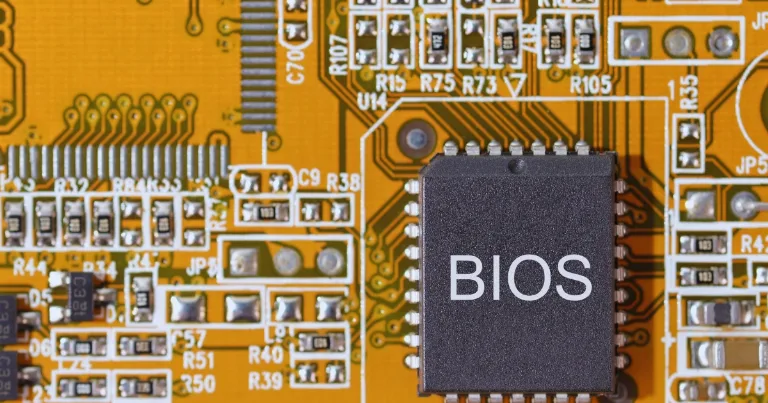How to Access BIOS on Any PC (Windows 10 & 11)

Ever wondered how to open BIOS or how to access BIOS on your PC? It’s not always obvious, especially since every brand uses different keys. Sometimes your computer just boots straight into Windows and you miss the chance to get into BIOS.
Knowing how to boot into BIOS is important if you want to change stuff like Secure Boot or TPM settings. BIOS is the part that runs before Windows, so you won’t find it in normal menus.
In this guide, I’ll show you easy ways to open BIOS on any PC with Windows 10 or 11. We’ll cover pressing the right key when your PC starts and a quick way to get there from Windows itself. Plus, I’ll share common keys for popular PCs so you don’t have to guess.
Method 1: Press the BIOS Key When Your PC Starts
This is the classic way and still the most reliable.
Here’s what to do:
Shut down your PC completely.
Turn it back on.
As soon as your screen lights up, start tapping one of these keys:
Delete (Del)
F2
F10
Esc
The exact key depends on your PC brand. Dell usually uses F2, ASUS likes Delete, HP goes with Esc or F10 it’s different for everyone.
If you’re not sure which key works for your PC, you can use a free tool like CPU-Z. It shows your motherboard model and BIOS version so you can look up the right key for your system.
If Windows boots before you press the key, no worries just restart and try again. Timing is the trick here.
Once you’re in the BIOS, you can change all sorts of stuff. Boot order, fan control, virtualization, or memory settings it’s basically the behind-the-scenes control room of your computer.
Method 2: Access BIOS from Windows (No Key Pressing Needed)
If you keep missing the BIOS key or your PC boots too fast, Windows actually has a built-in way to help.
Here’s how:
Click Start → Settings → System → Recovery
Under Advanced startup, click Restart now
On the blue screen, choose Troubleshoot → Advanced options → UEFI Firmware Settings → Restart
Your PC will reboot straight into the BIOS. No timing needed, no stress.
This works on most modern machines using UEFI (which replaced the old legacy BIOS). If you don’t see the option, it’s possible your system doesn’t support this method or Secure Boot is disabled.
Common BIOS Keys by Brand (So You Don’t Have to Guess)
Here’s the thing different PC brands love using their own special keys to open BIOS. And yeah, they rarely tell you what it is until it flashes for half a second during boot. So here’s a quick cheat sheet:
ASUS – Usually Del or F2
Acer – F2 (sometimes Del)
Dell – F2
HP – Esc or F10
Lenovo – F1 or F2 (some models use the Novo button)
MSI – Del
Gigabyte – Del
Samsung – F2
Toshiba – F2 or Esc
Biostar – Del
Pro tip: keep tapping the key right after you press the power button don’t wait. If it boots into Windows, just restart and try again.
How to Identify Your BIOS and Motherboard Using CPU-Z
Not sure what motherboard or BIOS version your PC has? No worries. You can use a free tool called CPU-Z to get all the details in one place. Just head to the official site at https://www.cpuid.com/softwares/cpu-z.html and download the software. It’s safe, lightweight, and easy to install.
Once you run CPU-Z, go to the “Mainboard” tab. There, you’ll see your motherboard’s model, manufacturer, and BIOS version. This info helps you look up the exact BIOS key for your system or check if you need to update your BIOS. It’s a handy way to know what you’re working with before diving into settings.
Final Thoughts
Getting into your PC’s BIOS doesn’t have to be a headache. Whether you’re tapping the right key during startup or using Windows’ built-in option, it’s pretty straightforward once you know how. Remember, every PC is a bit different, so don’t stress if it takes a couple tries to get it right.
Using tools like CPU-Z can make things easier by showing exactly what motherboard and BIOS version you have no more guessing. With this info, you’ll be ready to access BIOS whenever you need to tweak settings or just check things out.
Hope this guide helped you figure out how to open BIOS on your PC with Windows 10 or 11. If you have any questions or tips, Feel free to leave a comment!
About the author
Alex David Du
I’m Alex. I’m 28, born in Brazil, studied computer science, and writing is how I communicate best. I cover gaming, tech, simple ways to make money online, and other things I find interesting. I also love coding and building projects that bring ideas to life.
- Languages
- Portuguese, English
- Work Mode
- Freelancer - Remote
- Country
- Brazil
- hello@byalexdavid.com